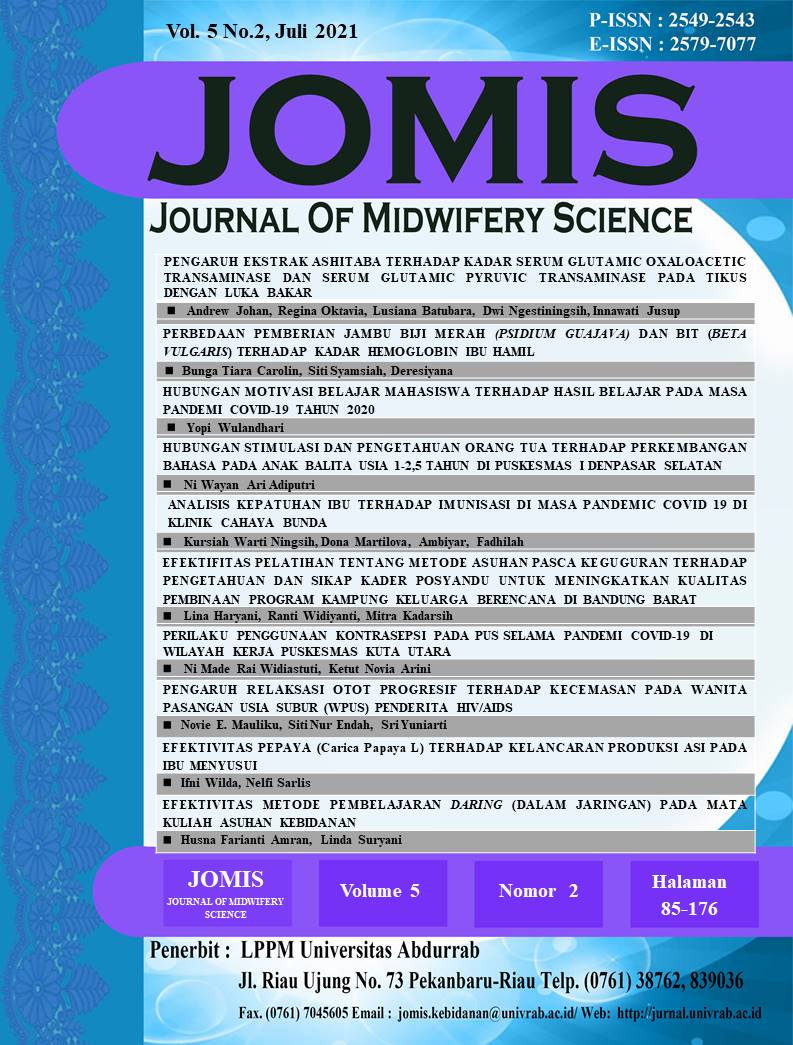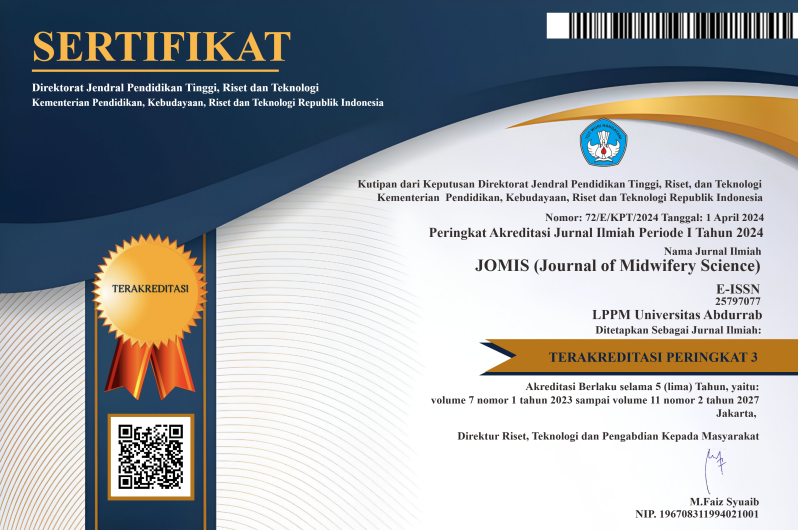English language
DOI:
https://doi.org/10.36341/jomis.v5i2.1697Kata Kunci:
Ashitaba; SGOT; SGPT; burns injuryAbstrak
Background: Serum glutamic oxaloacetic transaminase (SGOT) and serum glutamic pyruvic transaminase (SGPT) are increased in tissue damage. Ashitaba contains many compounds that can reduce serum SGOT and SGPT levels.
Objective: This study was proposed to prove that giving Ashitaba extract could reduce serum SGOT and SGPT levels in rats exposed to burn injury.
Methods: This study used a posttest only control group design with 20 rats as samples. All research samples were treated with second-degree burns and were divided into 2 different groups, the treatment group (given Ashitaba extract 300 mg /kg BW) and the control group. The blood serum was analyzed for SGOT and SGPT test on the 2nd, 8th, and 14th days. For statistical analysis, the Wilcoxon test used to analyze the levels of serum SGOT and SGPT.
Results: There was no significant difference in serum SGOT and SGPT levels between the control and treatment groups on the 2nd, 8th, and 14th days
Conclusion: Ashitaba extract could not reduce serum SGOT and SGPT levels in rats exposed to burn injury.
Unduhan
##submission.downloads##
Diterbitkan
Terbitan
Bagian
Lisensi
1. Copyright of all journal manuscripts is held by the JOMIS : Journal of midwifery scinece
2. Formal legal provisions to access digital articles of electronic journal are subject to the provision of the Creative Commons Attribution-ShareAlike license (CC BY-NC-SA), which means that JOMIS : Journal of midwifery scinece is rightful to keep, transfer media/format, manage in the form of databases, maintain, and publish articles.
3. Published manuscripts both printed and electronic are open access for educational, research, and library purposes. Additionally, the editorial board is not responsible for any violations of copyright law.
licensed under a Creative Commons Attribution-ShareAlike 4.0 International License.










